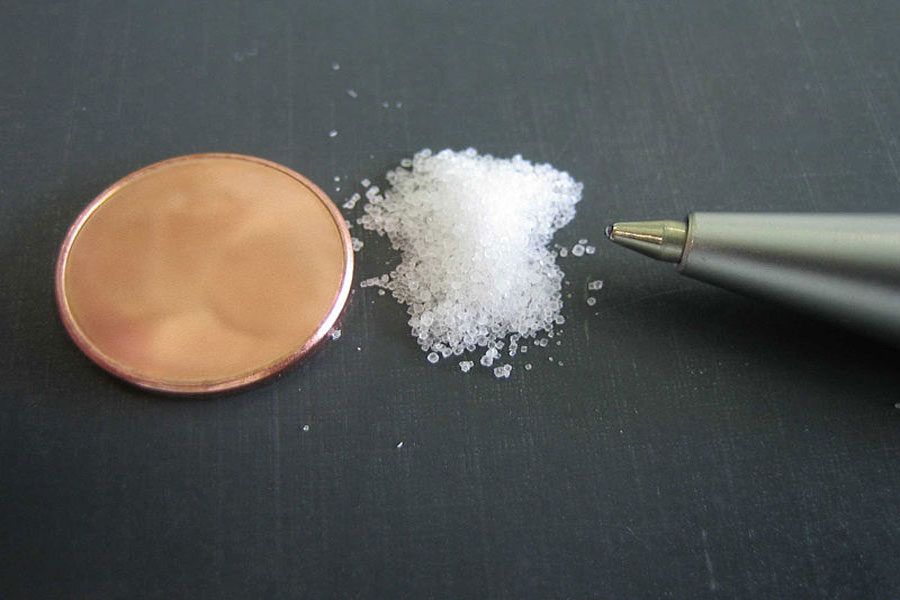Ra Ra Rasputin, lover of the Russian Queen is a popular song from the 1970s—by Boney M. This song references Grigori Yefimovich Rasputin, who was a Russian mystic and self-proclaimed holy man who befriended the family of Tsar Nicholas II, the last monarch of Russia, and gained considerable influence on the matters of imperial Russia. Grigori Rasputin, who had a terrible reputation for his womanizing and spendthrift ways, was infamous for his villainy.
Reckoning that Rasputin’s influence over the Tsarina (wife of Tsar Nicholas II) was a huge threat to the empire, a group of nobles concocted a plan to kill Rasputin by luring him for a wine drinking session. He was offered wine and cakes which were laced with cyanide and Rasputin had a feast of it—but, in spite of consuming it, he still stood rock solid. At last, it took a few bullets to bring him down. It is assumed that the absence of hydrochloric acid in his stomach (a condition known as achlorhydria) due to excessive drinking saved him from cyanide poisoning.
 It’s not rare to hear of cyanide being used for suicides as well as murder. It’s an irony that the same cyanide which was used to murder Jewish prisoners in Hitler’s concentration camps was the same poison that took the life of Hitler’s lover and close associates following the downfall of Germany at the end of the Second World War. The world renowned mathematician and computer scientist Alan Turing and the Liberation Tigers of Tamil Eelam (LTTE) members who executed former Prime Minister Rajiv Gandhi had all consumed cyanide to end their lives.
It’s not rare to hear of cyanide being used for suicides as well as murder. It’s an irony that the same cyanide which was used to murder Jewish prisoners in Hitler’s concentration camps was the same poison that took the life of Hitler’s lover and close associates following the downfall of Germany at the end of the Second World War. The world renowned mathematician and computer scientist Alan Turing and the Liberation Tigers of Tamil Eelam (LTTE) members who executed former Prime Minister Rajiv Gandhi had all consumed cyanide to end their lives.
It is said that every year 50,000 tonnes of Potassium Cyanide is being produced in the world. The major chunk of it is used for professional purposes in gold making and in the field of photography.
In a related medical incident, a man riding his bicycle suddenly fell down dying. In the postmortem examination it was revealed that he had not suffered any physical injury. There was a shining reddish spot on the right thigh of the deceased. A slight abrasion was also found there. Apart from that, there was no other physical injury on the body.
A detailed postmortem examination of the body was conducted. There was no injury, but there was discoloration of the blood; it was not the usual dark red, but bright red in colour. On opening the skull, the forensic expert sensed a peculiar odour typical of bitter almonds. Blood, Intestine and its contents, liver and kidney were sent to the chemical examination lab for testing. In the lab analysis it was found that the cause of the death was cyanide poisoning. The deceased was a goldsmith. From his clothes they recovered a small quantity of cyanide wrapped in a piece of paper which was wet.
How does cyanide poison enter the body?
This chemical can enter the body through the alimentary canal—the mucosa lining the digestive system and reach the blood. It can also enter the body through the skin as illustrated in the case above. Gaseous cyanide can be absorbed through the respiratory system by inhalation.
What is the lethal dose?
50 to 60 milligrams of Hydrocyanic Acid entering the body can cause certain death. 200 to 300 milligrams of Sodium Cyanide or Potassium Cyanide can also cause sudden death.
Time taken for death due to cyanide poisoning
Hydrocyanic Acid can cause death within two to ten minutes. Potassium or Sodium Cyanide can cause death within thirty minutes. Rarely does it take longer for the death to happen. If the administered dose is low, it may take longer time for the poison to reach the circulatory system, which can cause a delay in death.
How does Cyanide cause death?
Cyanide acts on the mitochondria which is the ‘power house’ of the cells by cutting off the production of ATP (Adenosine Triphosphate) causing cell death. Cyanide affects cellular respiration and disrupts the oxygen utilization. Cyanide combines with iron atom of cytochrome oxidase and prevent the uptake of oxygen for cellular respiration. It produces histotoxic anoxia. In simple terms the cells in the body are unable to use the oxygen for cellular respiration. Oxygen is needed for the production of ATP, the cell’s currency for energy, which is needed for all the cellular activities in the body. When ATP production is disrupted, all the cells in the body die and death becomes inevitable.
What are the signs and symptoms?
It is debatable as to what exactly cyanide tastes like. That still remains a mystery. However, there are opinions that cyanide has a bitter taste with burning sensation. Symptoms of cyanide poisoning are headaches, vertigo, giddiness, confusion, hyperthermia, dilation of the pupils, seizures leading to coma. There may be also perceived difficulty in breathing, respiratory depression and cyanosis. Smell of bitter almond in breath. Hypertension, hypotension and bradycardia leading to cardiovascular collapse. Death is usually due to respiratory failure.
What is the first aid for cyanide poisoning?
The only choice one has is to rush the patient to a well-equipped hospital with all the modern facilities to deal with an emergency situation like cyanide poisoning. Every minute counts.
Postmortem studies
There can be frothing at the mouth and the nose, which is to be noted. The colour of the blood and postmortem staining will be of bright red colour. There will be congestion in the internal organs and also pulmonary edema. The mucosal lining of the digestive system may be corroded. If the cyanide had been ingested through the mouth, a peculiar smell can emanate from the intestine and a similar smell of bitter almond can emanate from the brain on the opening of the skull.
But it is not easy to identify this smell. Everybody may not be able to relate to this smell. The ability to smell cyanide is a genetically determined trait that is absent in up to 50 % of the population. Only specialist doctors of forensic medicine who undertake postmortem examinations understand these intricacies.
Specimens of the liver, kidneys, blood and urine should be collected and sent to the laboratory for chemical analysis. Presence of cyanide can be confirmed only through chemical analysis. The earlier the chemical analysis, better the results. As time lapses, there are more chances of inaccurate results. If the forensic expert who does the postmortem doubts cyanide poisoning, it’s better for him to note the same while he is sending the specimens to the laboratory for chemical analysis. This would help the lab authorities to do these tests sooner because it becomes difficult to identify cyanide poisoning if it gets delayed.
History is replete with incidents of people committing suicide and murders using cyanide. Only rarely have accidental deaths of cyanide poisoning as a matter of occupational hazard been reported.
Chronic poisoning
People working in electroplating, tanning and dye industries are constantly exposed to the dangers of slow and chronic poisoning. These patients may complain of headaches, giddiness, nausea, anorexia, vomiting, loss of weight, anemia etc. In certain cases, there is a possibility of diminishing eyesight and hoarseness of voice. There may be optic atrophy, deafness and dermatitis.
By Jinesh P S and Arun Mangalath; Translated by Sangita Harry
Dr Jinesh P S
Dr Arun Mangalath







